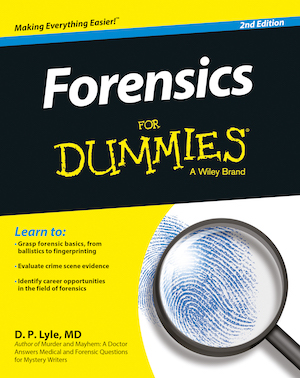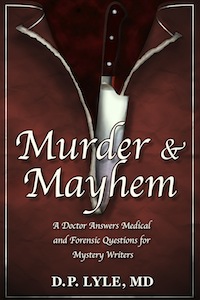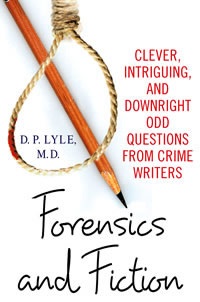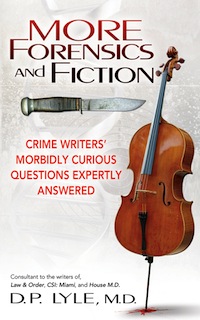
Day Pass for a Psychopath
Treatments are not yet sufficiently effective to engender trust.
Last week in England, the notorious child killer Colin Pitchfork – the first criminal to be identified with DNA – created a stir. Now 56, he’s been in prison since 1988 for the rape/murders of two teenage girls. At the time, he was sentenced to a minimum of 30 years. That term’s end is just months away and it appears that the system is preparing for it.
The former baker was given an unsupervised day pass. This did not sit well with the parents of his victims. They fear he’s being prepared for eventual release. Prison officials possibly believe he no longer poses a danger to the community, but British criminologist David Wilson described Pitchfork’s crimes as “pathological” and believes he should not be released.
Pitchfork raped and strangled Lynda Mann on a footpath in November 1983, while his infant son slept in his car. Three years later, he raped and killed Dawn Ashworth in nearly the same spot. Then he doctored his ID and paid someone to pose as him during a community-wide DNA screening (the first ever). That guy had a big mouth.
Pitchfork is devious. This is partly what makes him dangerous. So does the fact that he strangled his victims – a behavioral red flag for persistent violence. In a 2014 report, the U.S. Sentencing Commission recognized strangulation as a marker of dangerousness, recommending increased prison time for such offenders. Between the two murders, Pitchfork had sexually assaulted at least two other young women. His crimes were considered sadistic.
Let’s not forget when hospital staff in Ontario was so optimistic in 1991 about the progress of another child killer, Peter Woodcock, that they granted him a day pass. As a teenager in the mid-1950s, he’d killed two boys and a girl. Arrested, he confessed, but his crimes were so shocking and his manner so distant he was declared legally insane. He went to a psychiatric facility. Going through numerous therapeutic treatments for decades, Woodcock charmed the staff. He was granted the unsupervised day pass. Far from proving that he was reformed, he used the opportunity to kill again. Within hours, he murdered an inmate who had jilted him, mutilating and sodomizing the corpse.
One of the facility’s staff commented that all of the therapy they’d given him had merely made him more manipulative and able to pose as safe. He wasn’t.
Last week, we also saw news of “psychopath” Randall Toshio Saito escaping from Oahu’s Hawaii State Hospital, where he’s been held since his insanity finding in a 1979 murder. He’d filed for a conditional release in 1993 but was denied when the court found that he still had sadistic sexual urges and an attraction to necrophilia. He was denied again in 2000. Fed up, Seito decided to escape and prove that he could live normally.
“They won’t give me a chance,” he said in an interview. “They’re not going to release me. I decided to run away and come to the mainland and to live as long as I can on the money that I had in the community without getting into any kind of trouble.” He reportedly had $7,000 and some help. “I can live in a community without doing drugs, without hurting anyone and prove without a doubt I did it.”
But this sounds like Gary Gilmore. He’d spent his youth in reform school and prison for numerous delinquent activities. After being allowed a conditional pass in 1973 to attend art classes, he committed armed robbery. Incarcerated again, one day he told a judge that all he needed was a chance to prove himself. He argued that “you can keep a person locked up too long” and that “there is an appropriate time to release somebody or to give them a break.” He was sure he could make it.
Eventually, a parole plan was worked out, with family support. In 1976, Gilmore was released. Three months later, he was back for the cold-blooded murders of two men. The very chance he’d requested to prove himself had been granted twice, but he didn’t know himself as well as he believed. When life got difficult, he resorted to violence.
Prisons and other facilities must show consistent results for treated dangerous offenders before they release people whose past impulses might return. Day passes aren’t likely to demonstrate much, and some of them know very well how to pose.

Katherine Ramsland is a professor of forensic psychology at DeSales University in Pennsylvania, where she also teaches criminal justice. She holds a master’s in forensic psychology from the John Jay College of Criminal Justice, a master’s in clinical psychology from Duquesne University, a master’s in criminal justice from DeSales University, and a Ph.D. in philosophy from Rutgers. She has been a therapist and a consultant. Dr. Ramsland has published over 1,000 articles and 60 books.
Original Post on Psychology Today: https://www.psychologytoday.com/blog/shadow-boxing/201711/day-pass-psychopath










































